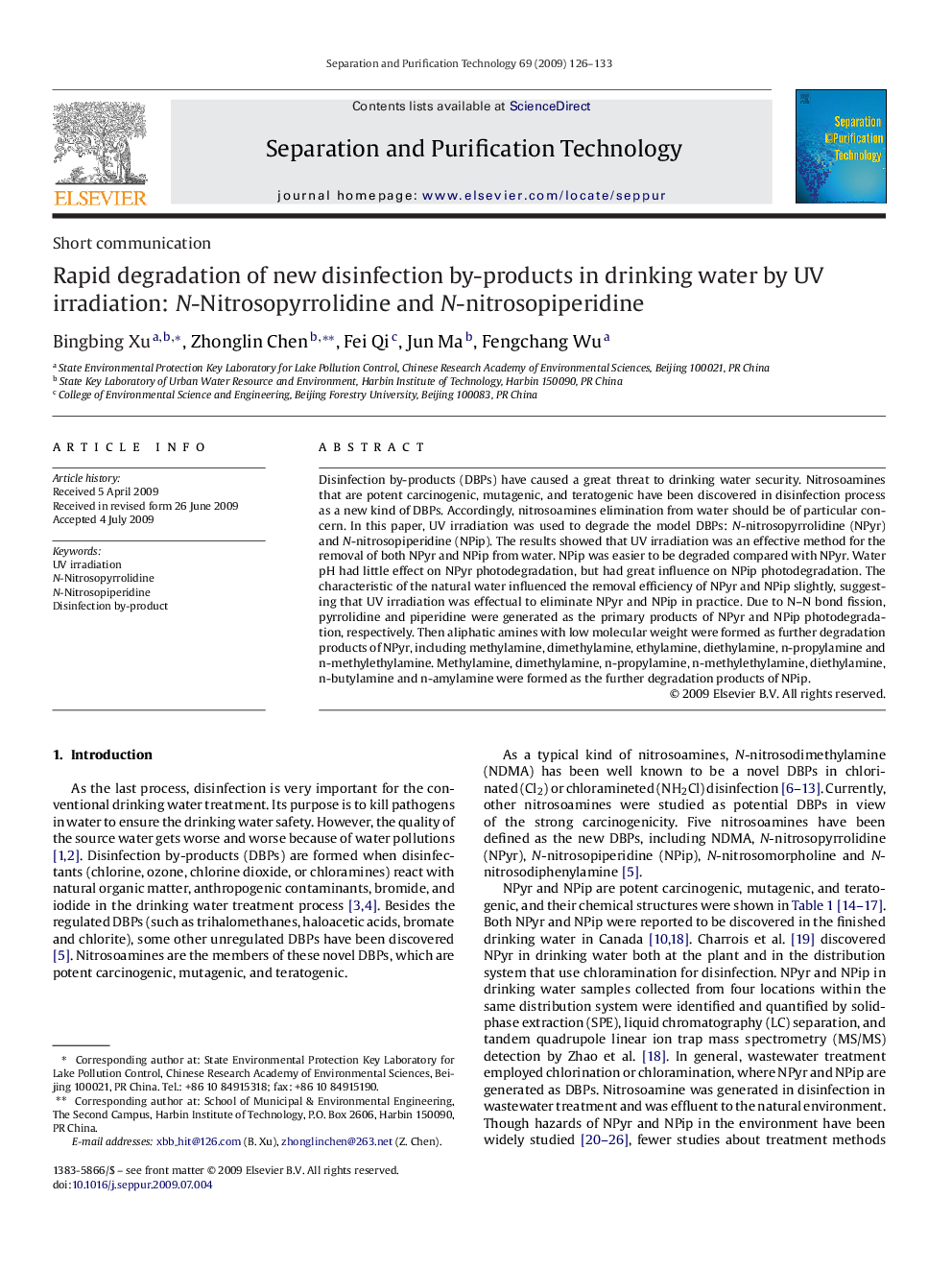| Article ID | Journal | Published Year | Pages | File Type |
|---|---|---|---|---|
| 643223 | Separation and Purification Technology | 2009 | 8 Pages |
Abstract
Disinfection by-products (DBPs) have caused a great threat to drinking water security. Nitrosoamines that are potent carcinogenic, mutagenic, and teratogenic have been discovered in disinfection process as a new kind of DBPs. Accordingly, nitrosoamines elimination from water should be of particular concern. In this paper, UV irradiation was used to degrade the model DBPs: N-nitrosopyrrolidine (NPyr) and N-nitrosopiperidine (NPip). The results showed that UV irradiation was an effective method for the removal of both NPyr and NPip from water. NPip was easier to be degraded compared with NPyr. Water pH had little effect on NPyr photodegradation, but had great influence on NPip photodegradation. The characteristic of the natural water influenced the removal efficiency of NPyr and NPip slightly, suggesting that UV irradiation was effectual to eliminate NPyr and NPip in practice. Due to N-N bond fission, pyrrolidine and piperidine were generated as the primary products of NPyr and NPip photodegradation, respectively. Then aliphatic amines with low molecular weight were formed as further degradation products of NPyr, including methylamine, dimethylamine, ethylamine, diethylamine, n-propylamine and n-methylethylamine. Methylamine, dimethylamine, n-propylamine, n-methylethylamine, diethylamine, n-butylamine and n-amylamine were formed as the further degradation products of NPip.
Related Topics
Physical Sciences and Engineering
Chemical Engineering
Filtration and Separation
Authors
Bingbing Xu, Zhonglin Chen, Fei Qi, Jun Ma, Fengchang Wu,
